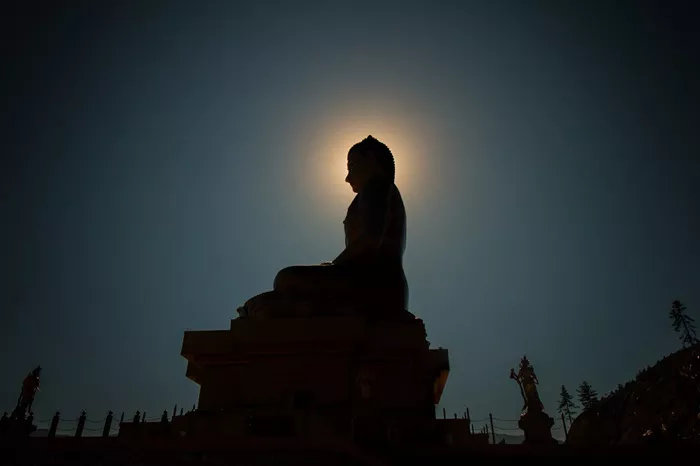Embarking on the path to become a Buddhist monk is a profound commitment to spiritual growth and service. This journey requires careful preparation, understanding, and dedication. This article outlines the essential steps, conditions, and procedures involved in ordaining as a Buddhist monk.
Understanding the Monastic Path
Before pursuing monastic life, it’s crucial to comprehend what it entails. Monks dedicate themselves to the teachings of the Buddha, embracing a life of simplicity, celibacy, and meditation. They renounce worldly possessions and desires to attain enlightenment and assist others on their spiritual journeys.
Evaluating Personal Motivation
Reflect deeply on your reasons for wanting to become a monk. Ensure that your motivation aligns with the principles of Buddhism, such as seeking enlightenment, serving others, and practicing compassion. This introspection is vital for sustaining commitment during challenging times.
Learning About Buddhism
Gain a solid understanding of Buddhist teachings before committing to monastic life. Study the Four Noble Truths, the Eightfold Path, and other fundamental doctrines. Engage with local Buddhist communities, attend teachings, and participate in meditation retreats to immerse yourself in the practice.
Choosing a Buddhist Tradition
Buddhism encompasses various traditions, including Theravada, Mahayana, and Vajrayana, each with unique practices and monastic codes. Research these traditions to determine which resonates with your beliefs and aspirations. This choice will influence your training, daily practices, and community life.
Finding a Suitable Monastery
Identify a monastery that aligns with your chosen tradition and offers a supportive environment for novices. Visit different monasteries, observe their routines, and interact with the resident monks. Ensure that the monastery provides proper guidance and resources for your spiritual development.
Meeting Basic Requirements
Certain prerequisites must be met to qualify for ordination:
Age: Typically, candidates should be at least 20 years old. However, some traditions allow younger individuals to become novice monks.
Parental Consent: If under a certain age (often 18), parental or guardian consent may be required.
Marital Status: Unmarried individuals are generally preferred. Married individuals may need spousal consent and must commit to celibacy.
Health: Good physical and mental health is essential to undertake monastic duties effectively.
Debt-Free: Candidates should be free from significant financial obligations.
Undergoing Preliminary Training
Before full ordination, aspirants often undergo a period of preliminary training:
Observing Precepts: Adopt the Five Precepts, which include refraining from killing, stealing, sexual misconduct, false speech, and intoxicants.
Monastic Experience: Participate in short-term monastic programs or retreats to experience monastic life firsthand.
Mentorship: Seek guidance from experienced monks who can provide insights and support during your preparation.
The Ordination Process
Ordination typically occurs in two stages:
1. Novice Ordination (Pabbajja)
This initial stage involves:
Requesting Ordination: Formally ask a senior monk to accept you as a novice.
Shaving the Head: Symbolizing renunciation of worldly life, your head is shaved.
Donning Robes: Wear the traditional monastic robes provided by the monastery.
Taking Precepts: Commit to the Ten Precepts, which expand upon the basic five and include additional vows such as refraining from eating after noon and avoiding entertainment.
2. Full Ordination (Upasampada)
After a period as a novice, you may proceed to full ordination:
Eligibility: Typically, a minimum age of 20 and completion of novice training are required.
Community Approval: A formal ceremony is conducted in the presence of a monastic assembly, usually comprising at least five fully ordained monks.
Taking Higher Precepts: Accept the full monastic code, which includes over 200 rules governing conduct, depending on the tradition.
Embracing Monastic Life
Post-ordination, monks commit to:
Daily Practices: Engage in meditation, chanting, study, and communal activities.
Observing Precepts: Adhere strictly to the monastic code to maintain discipline and focus.
Community Service: Participate in teaching, counseling, and community outreach to embody compassion and service.
Challenges and Rewards
Monastic life presents unique challenges, including:
Renunciation: Letting go of personal desires and attachments.
Discipline: Maintaining strict adherence to monastic rules.
Solitude: Embracing periods of isolation for deep contemplation.
However, the rewards include profound inner peace, clarity, and the fulfillment of living a life dedicated to spiritual awakening and the betterment of all beings.
Conclusion
Becoming a Buddhist monk is a transformative journey that demands sincere dedication, thorough preparation, and unwavering commitment. By understanding the conditions and procedures outlined above, aspiring monks can embark on this sacred path with confidence and clarity, contributing to their own enlightenment and the well-being of others.

